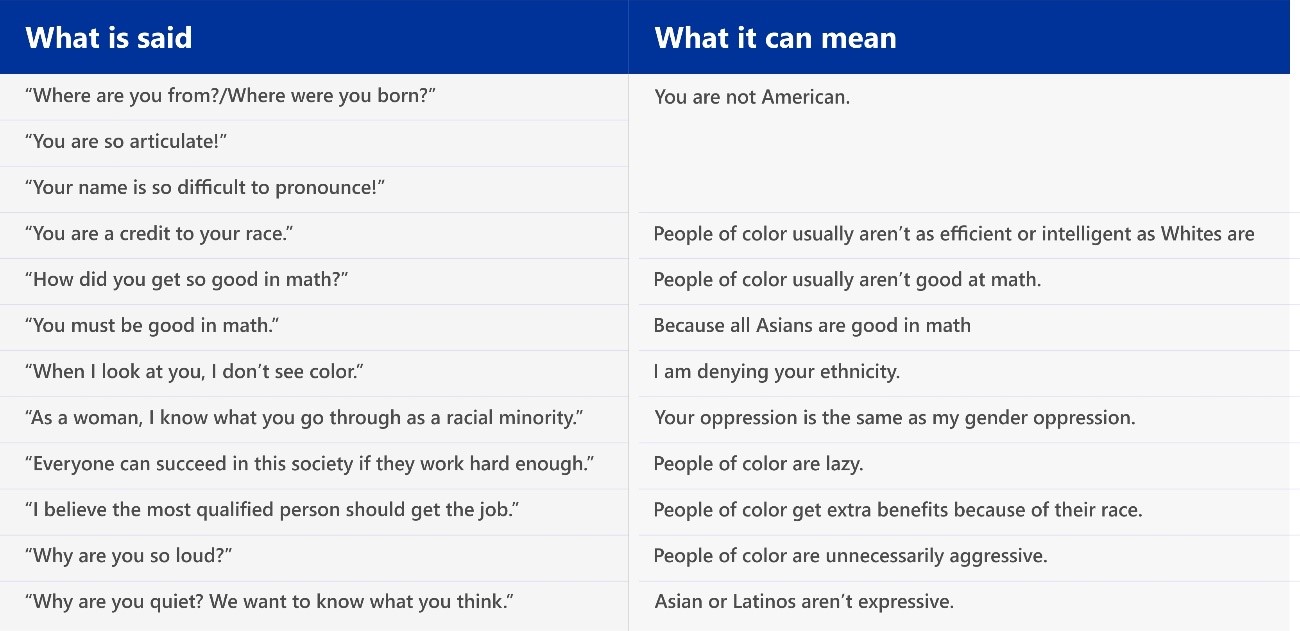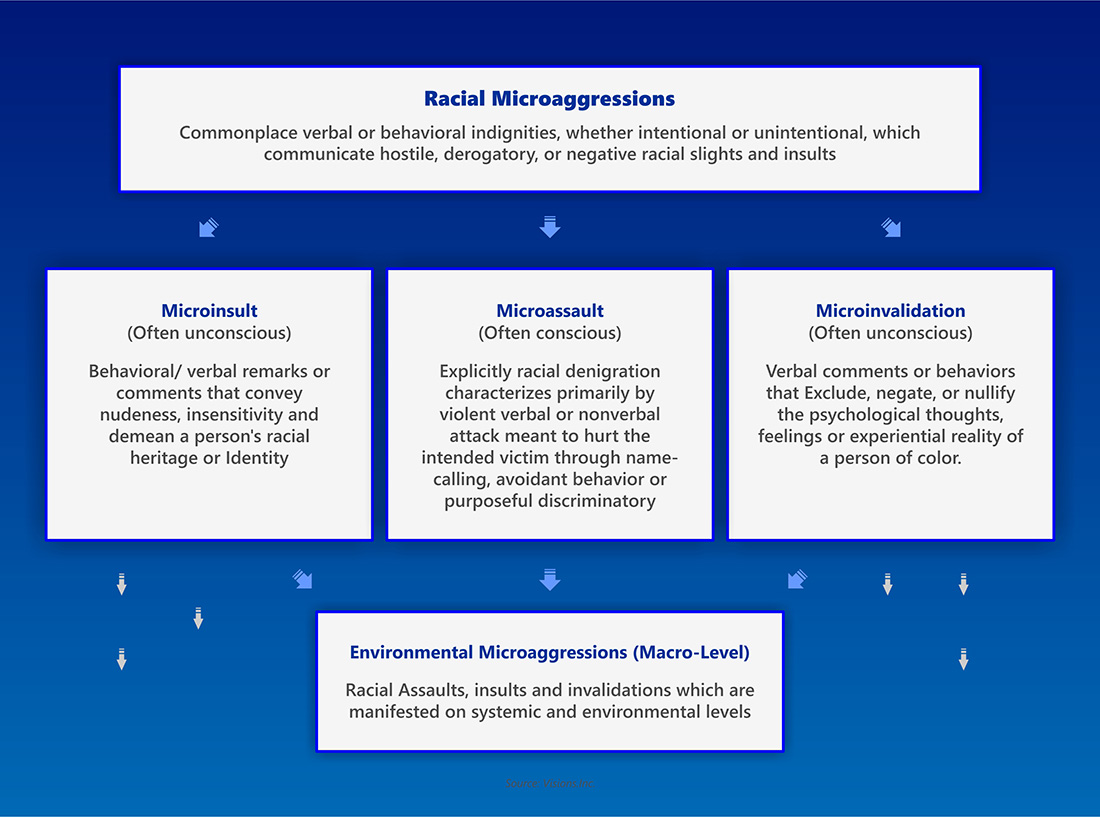
6 out of 10 employees would consider leaving if you have an emotionally unsafe workplace.
Microaggressions have emerged as a big contributor to emotional vulnerability among employees.
Derald Wing Sue, a psychologist, defines them as “brief, everyday exchanges that send denigrating messages to certain individuals because of their group membership.”
These innocuous-looking interactions can lead to organization-wide damages.They can hamper your employer brand image too.
In a survey conducted by SurveyMonkey,
The good news is:
Talent leaders can keep microaggressions at bay.
Disguised as ordinary, everyday conversations, microaggressions can be difficult to spot. The forms can be extremely subtle and can even be unintended: putting a choice of male or female in basic forms, limiting relationship status to married or single, or asking a woman applicant if she plans to have children soon.
In the words of the victims:
“There were two black women working in production on the broadcast — myself and another. We both held the lowest-ranking positions on staff. Not uncommon in most predominantly white institutions, most of our white colleagues had trouble keeping our names straight. As a joke, they began to call us We-Dra – short for Whitney and Deidra.”
“A senior partner asked to ‘touch my hair’ in order to confirm it was ‘all mine.’”
“An older male colleague interrupted me in a meeting and said, ‘now young lady…’, and then told me how I was incorrect in his opinion.”
From telling an older employee: “Hold-on Grandpa, let me show you how that works” to taunting a gay coworker: “You’re being paranoid”, microaggressions can take many forms. Women and minorities are in the line of fire here.



Then some are intended to offend the receiver. Here are a few examples:
In the survey conducted by SurveyMonkey, respondents have shown how they would like leaders to address microaggressions. While most – 67 percent – were ok with an apology, 9 percent said that the extent of offense demanded termination.

A study of 1,000 adults conducted by the Center for Generational Kinetics and Ultimate Software said lack of emotional safety is the prime reason why employees leave.
Over the years, the face of racism and bias has changed. Outwardly it may not be the same as what our parents or grandparents faced, but inside the stonewall of recent protests like Black Lives Matter and growing public awareness, it has become subtler.
With growing diversity at the workplace, communication and emotional safety of employees become critical too.
Microaggressions undermine people’s successes and inhibit them from doing their best work or remaining optimally productive.
How do you plan to address them?


CredBadge™ is a proprietary, secure, digital badging platform that provides for seamless authentication and verification of credentials across digital media worldwide.
CredBadge™ powered credentials ensure that professionals can showcase and verify their qualifications and credentials across all digital platforms, and at any time, across the planet.

Please enter the License Number/Unique Credential Code of the certificant. Results will be displayed if the person holds an active credential from TMI.